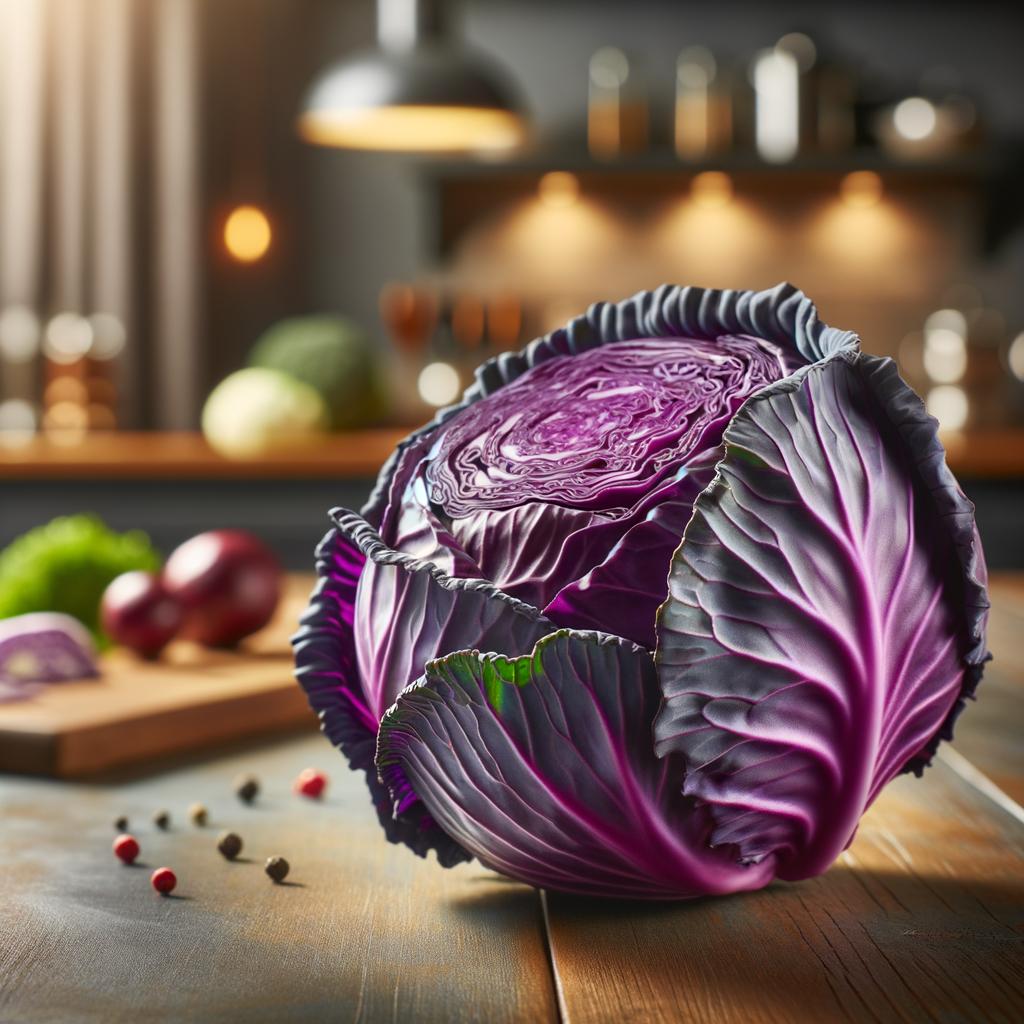Purple Cabbage

Purple Cabbage
Description
Purple cabbage, also known as red cabbage, is a vibrant and versatile vegetable that adds a pop of color to any dish. Its appearance is striking, with layers of tightly packed, glossy leaves that transition from a deep purple to a rich, almost jewel-like magenta. The texture is crisp and crunchy when raw, but becomes tender and almost silky when cooked. Its flavor profile is slightly peppery with a hint of earthiness, yet it retains a subtle sweetness that sets it apart from its green counterpart.
The unique characteristic of purple cabbage is its color-changing properties. When cooked with acidic ingredients like vinegar or lemon juice, it turns a vibrant shade of red. However, when cooked with alkaline substances, it shifts to a beautiful blue. This magical transformation is due to the presence of a pigment called anthocyanin, making purple cabbage a delightful ingredient to experiment with.
Primary Uses
Purple cabbage is a staple in a variety of cuisines. In German cooking, it's often braised with apples and spices to create 'Rotkohl,' a traditional side dish. It's also a key component in the fermented Korean dish, Kimchi. In salads and slaws, it lends a delightful crunch and vibrant color.
Beyond culinary uses, purple cabbage has been used as a natural food coloring and even as a pH indicator in science experiments due to its color-changing properties. It also holds cultural significance in certain regions, symbolizing prosperity and longevity.
History
Purple cabbage has a rich history dating back to ancient times. It's believed to have originated in the Mediterranean and Middle East, with evidence of its consumption dating back to the Roman era. Romans believed it had health benefits and used it as a remedy for various ailments.
Its popularity spread across Europe during the Middle Ages, and it became a staple in Northern European cuisine. The vegetable's hardiness, which allowed it to survive in harsh winters, contributed to its widespread use. Over time, its cultivation spread to the Americas and other parts of the world.
There's a charming folklore associated with purple cabbage in Germany. It is said that for each leaf of cabbage, a coin will be added to the household in the coming year, symbolizing prosperity.
Nutritional Information
Purple cabbage is a nutritional powerhouse. It's rich in vitamins C and K, and a good source of fiber and antioxidants, particularly anthocyanins, which contribute to its vibrant color. These antioxidants have been linked to numerous health benefits, including reduced inflammation and a lower risk of heart disease.
Compared to green cabbage, purple cabbage contains a higher amount of these beneficial antioxidants, making it a superior choice from a nutritional standpoint. However, like all vegetables, it's best enjoyed as part of a varied and balanced diet.
The story of purple cabbage is a testament to the beauty of nature and the rich tapestry of culinary history. Whether it's served raw in a crunchy salad, braised with apples, or used as a natural dye, this vibrant vegetable is sure to bring a touch of magic to your table.

